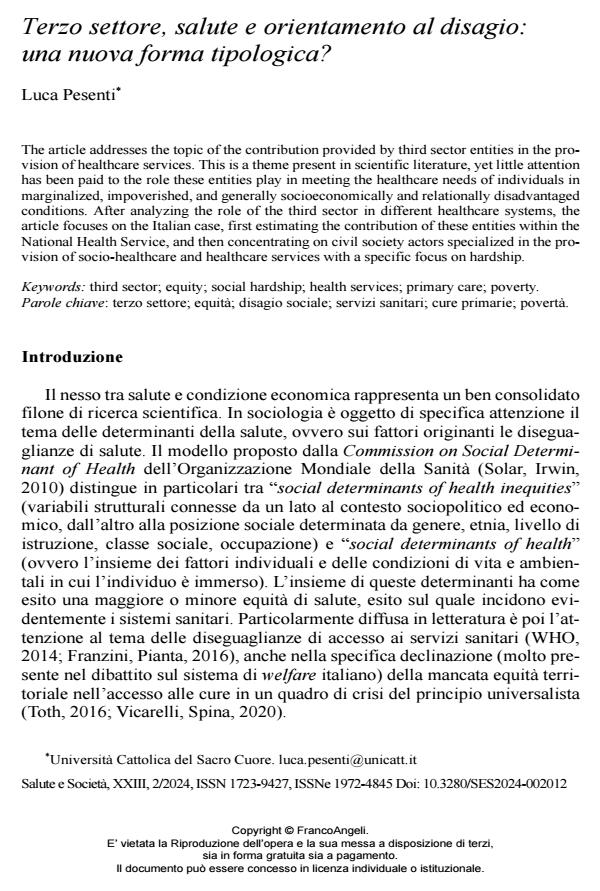Terzo settore, salute e orientamento al disagio: una nuova forma tipologica?
Titolo Rivista SALUTE E SOCIETÀ
Autori/Curatori Luca Pesenti
Anno di pubblicazione 2024 Fascicolo 2024/2
Lingua Italiano Numero pagine 16 P. 181-196 Dimensione file 216 KB
DOI 10.3280/SES2024-002012
Il DOI è il codice a barre della proprietà intellettuale: per saperne di più
clicca qui
Qui sotto puoi vedere in anteprima la prima pagina di questo articolo.
Se questo articolo ti interessa, lo puoi acquistare (e scaricare in formato pdf) seguendo le facili indicazioni per acquistare il download credit. Acquista Download Credits per scaricare questo Articolo in formato PDF

FrancoAngeli è membro della Publishers International Linking Association, Inc (PILA)associazione indipendente e non profit per facilitare (attraverso i servizi tecnologici implementati da CrossRef.org) l’accesso degli studiosi ai contenuti digitali nelle pubblicazioni professionali e scientifiche
The article addresses the topic of the contribution provided by third sector entities in the provision of healthcare services. This is a theme present in scientific literature, yet little attention has been paid to the role these entities play in meeting the healthcare needs of individuals in mar-ginalized, impoverished, and generally socioeconomically and relationally disadvantaged con-ditions. After analyzing the role of the third sector in different healthcare systems, the article focuses on the Italian case, first estimating the contribution of these entities within the National Health Service, and then concentrating on civil society actors specialized in the provision of socio-healthcare and healthcare services with a specific focus on hardship.
Parole chiave:terzo settore; equità; disagio sociale; servizi sanitari; cure primarie; povertà.
Luca Pesenti, Terzo settore, salute e orientamento al disagio: una nuova forma tipologica? in "SALUTE E SOCIETÀ" 2/2024, pp 181-196, DOI: 10.3280/SES2024-002012